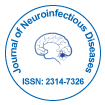Unsere Gruppe organisiert über 3000 globale Konferenzreihen Jährliche Veranstaltungen in den USA, Europa und anderen Ländern. Asien mit Unterstützung von 1000 weiteren wissenschaftlichen Gesellschaften und veröffentlicht über 700 Open Access Zeitschriften, die über 50.000 bedeutende Persönlichkeiten und renommierte Wissenschaftler als Redaktionsmitglieder enthalten.
Open-Access-Zeitschriften gewinnen mehr Leser und Zitierungen
700 Zeitschriften und 15.000.000 Leser Jede Zeitschrift erhält mehr als 25.000 Leser
Indiziert in
- Index Copernicus
- Google Scholar
- Öffnen Sie das J-Tor
- RefSeek
- Hamdard-Universität
- EBSCO AZ
- OCLC – WorldCat
- Direkte Kabine
- Publons
- Genfer Stiftung für medizinische Ausbildung und Forschung
- ICMJE
Nützliche Links
Open-Access-Zeitschriften
Teile diese Seite
Abstrakt
Quantitative Assessment of Cortical Thickness in 3t in Behcet's disease Patients with and without Neurological involvement, as well as Parenchymal Neuro-Illness Behcet's
Ivan Adamec
The goal of this study was to assess the geographic distribution of cortical damage in Behcet’s disease (BD) patients with or without neurological involvement utilising a cortical thickness assessment technique employing three-dimensional T1-weighted imaging.
Methods and materials: The prospective study comprised 58 BD patients with no neurological symptoms, 22 Parenchymal Neuro-Behçets disease (PNBD) patients, and 50 healthy controls. 3T MRI was used to obtain anatomical 3D T1 pictures from all individuals. We computed and analysed group differences in cortical thickness using a computational anatomy toolkit (CAT12). We computed and analysed group differences in cortical thickness using a computational anatomy toolkit (CAT12).
Results: When compared to healthy controls (HCs), patients with BD without neurological involvement had lower cortical thickness in the bilateral frontal, bilateral parietal, and right precuneus (p 0.05 FWE adjusted [FWEc). When PNBD patients were compared to BD patients without neurological involvement, frontoparietal cortical thickness was reduced (p 0.05 FWEc). When compared to HC patients, PNBD patients had significantly lower cortical thickness (p 0.05 FWEc). The duration of the disease was associated to cortical thickness in the right pericalcarine (p = 0.012 false discovery rate). [FDR], r = −0.40), left pericalcarine (p = 0.013 FDR, r = −0.44), and left transverse temporal (p = 0.007 FDR, r = −0.41) regions.
Conclusion: Cortical thickness decreases in BD patients who do not have neurological impairment. Cortical thickness decrease is more pronounced in people with parenchymal neurobehcet’s disease. In some areas, cortical thickness has a negative relationship with illness duration.
Zeitschriften nach Themen
- Allgemeine Wissenschaft
- Biochemie
- Chemie
- Genetik und Molekularbiologie
- Geologie und Geowissenschaften
- Immunologie und Mikrobiologie
- Klinische Wissenschaften
- Krankenpflege und Gesundheitsfürsorge
- Landwirtschaft und Aquakultur
- Lebensmittel & Ernährung
- Maschinenbau
- Materialwissenschaften
- Medizinische Wissenschaften
- Pharmazeutische Wissenschaften
- Physik
- Sozial- und Politikwissenschaften
- Umweltwissenschaften
- Veterinärwissenschaften
Klinische und medizinische Fachzeitschriften
- Anästhesiologie
- Augenheilkunde
- Betrieb
- Dermatologie
- Diabetes und Endokrinologie
- Gastroenterologie
- Genetik
- Gesundheitspflege
- Immunologie
- Infektionskrankheiten
- Kardiologie
- Klinische Forschung
- Medizin
- Mikrobiologie
- Molekularbiologie
- Neurologie
- Onkologie
- Pädiatrie
- Pathologie
- Pflege
- Toxikologie
- Zahnheilkunde

 English
English  Spanish
Spanish  Chinese
Chinese  Russian
Russian  French
French  Japanese
Japanese  Portuguese
Portuguese  Hindi
Hindi